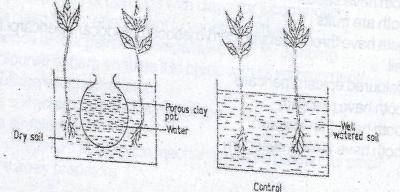
Biology
Paper 1 | Objectives | 49 Questions
WASSCE/WAEC MAY/JUNE
Year: 2018
Level: SHS
Time:
Type: Question Paper
Answers provided
FREE
No description provided
Feedbacks
This paper is yet to be rated

Paper 1 | Objectives | 49 Questions
WASSCE/WAEC MAY/JUNE
Year: 2018
Level: SHS
Time:
Type: Question Paper
Answers provided
No description provided
This paper is yet to be rated
Middle East and North Africa MENA Scholarship Program (MSP) initiative provides scholarships
These are the best study techniques and methods that get higher grades in any school tests or exams.
Apply tips for stress-free eating before and during exams and what to avoid for good grades.
| # | Question | Ans |
|---|---|---|
| 1. |
The scientist who introduced binomial nomenclature in the classification of organisms was A. Charles Darwin B. Carolus Linnaeus C. John Ray D. Louis Pasteur
Show Content
Detailed SolutionCarolus Linnaeus, the swedish naturalist, is the man behind this present way of classifying plants and animals. |
|
| 2. |
Which of the following statements is true about arthropods? A. Prothorax bears only legs B. Mesothorax bears only legs C. Metathorax bears only wings D. Prothorax bears only wings
Show Content
Detailed SolutionThe prothorax contains the first pair of legs in the arthropods. It's the first of the three segments of the thorax. |
|
| 3. |
What level of organization is Spirogyra? A. System B. Organ C. Cell D. Tissue
Show Content
Detailed SolutionUnicellular organisms like the Amoeba, Spirogyra etc fall in the cellular level of organization. |
|
| 4. |
The streaming movement of cytoplasm within the Paramecium is known as A. Transpiration B. Digestion C. Cyclosis D. Osmosis
Show Content
Detailed SolutionCyclosis is also called Cytoplasmic streaming. It is defined as the streaming rotary motion of the protoplasm within certain cells and unicellular organisms. Paramecium is an example of a unicellular organism. |
|
| 5. |
Which of the following organelles is found only in plant cells? A. Mitochondria B. Ribosomes C. Lysosomes D. Plastids
Show Content
Detailed SolutionPlastids are found only in plants and algae. One common type of plastid is the chloroplast. |
|
| 6. |
Active transport differs from diffusion in that active transport A. is a very fast process B. allows the movement of substances against concentration gradient C. takes place in both light and dark reaction of photosynthesis D. occurs in both plant and animal tissues
Show Content
Detailed SolutionDiffusion, as well as osmosis depends only on concentration gradient but active transport works against concentration gradient. |
|
| 7. |
 The diagrams above are illustrations of an experimental set-up to demonstrate a type of tropic response in plants. The type of response demonstrated is A. phototropism B. geotropism C. hydrotropism D. thigmotropism
Show Content
Detailed SolutionFrom the first diagram, you notice the roots of the plants bending towards the porous water pot, hence this is a form of response in the direction of the stimuli of the water. This is a form of hydrotropism. |
|
| 8. |
 The conclusion drawn from the experiment in the diagram above is that A. shoots of plants are negatively thigmotropic B. shoots of plants are negatively geotropic C. shoots of plants are positively phototropic D. roots of plants are positively hydrotropic
Show Content
Detailed SolutionThe roots of the plants in diagram 1 bend towards the porous clay pot while growing and the well watered soil sees the plants growing straight and erect. The roots of the plants are positively hydrotropic (respond towards the pull of water positively). |
|
| 9. |
The odontoid process is found on the A. axis vetebra B. atlas vetebra C. thoracic vetebra D. sacral vetebra
Show Content
Detailed SolutionThe odontoid process is a projection of the axis vetebra. It is seen at its point of joining with the body. |
|
| 10. |
A seedling was made to stand in a solution of red ink for three hours and a transverse section of the stem was examined under the microscope. The process being investigated was A. the importance of micro elements to plants B. ascent of water through the xylem C. diffusion of colored substances D. distribution of food in plants |
C |
Preview displays only 10 out of the 49 Questions